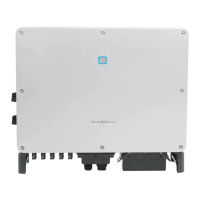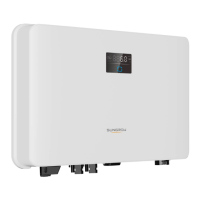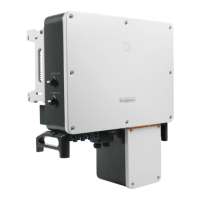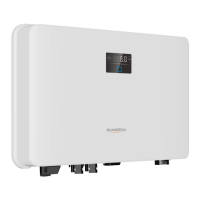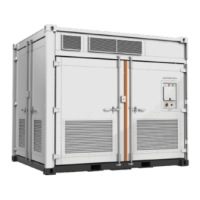User Manual 6 Electrical Connection
35
6.3 Connecting Inverter to AC Grid
6.3.1 AC Side Requirements
Only after receiving prior approval from the local grid company as
required, should you connect the inverter to the grid.
Prior to connecting to the utility grid, verify whether the grid voltage and frequency
are within the range of inverter output parameters, referred to “Appendix”.
Otherwise consult local grid company for solution.
Residual Current Device
With an integrated universal current-sensitive residual current monitoring unit
inside, the inverter is able to distinguish the fault currents from normal capacitive
leakage currents. The inverter will disconnect from mains as soon as a fault current
of more than limit value has been detected.
However if an external RCD or residual current breaker is mandatory, the switch
must trigger at a failure current of 300mA or higher.
6.3.2 Grid Connection
Wiring methods used should be in accordance with the National Electric Code,
ANSI/NFPA 70 and/or any prevailing local codes and regulations.
An AC terminal block inside the combiner unit is used for the five-wire grid
connection (L1, L2, L3, N, PE) of the inverter.
AC Cable Requirements
Consider the following facts when select AC cables specifications and types:
y
The grid impedance of the AC cable must correspond to the specification to
avoid unintended disconnection from the grid or derating of the output power.
y
Voltage drop and other consideration may use the larger size cables. Avoid
power loss in cables of more than 1% of nominal inverter rating.
y
Withstand ambient temperature;
y
Layout type (inside wall, underground, free air etc.);
y
UV resistance and so on.
Use only Copper (Cu) wire rated for 90°C (194°F), solid or with type B or type C
stranding (19 strands maximum). For conductors with finer stranding, a suitable UL
listed wire ferrule must be used.
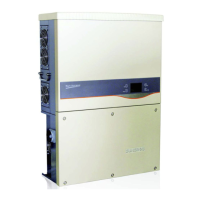
